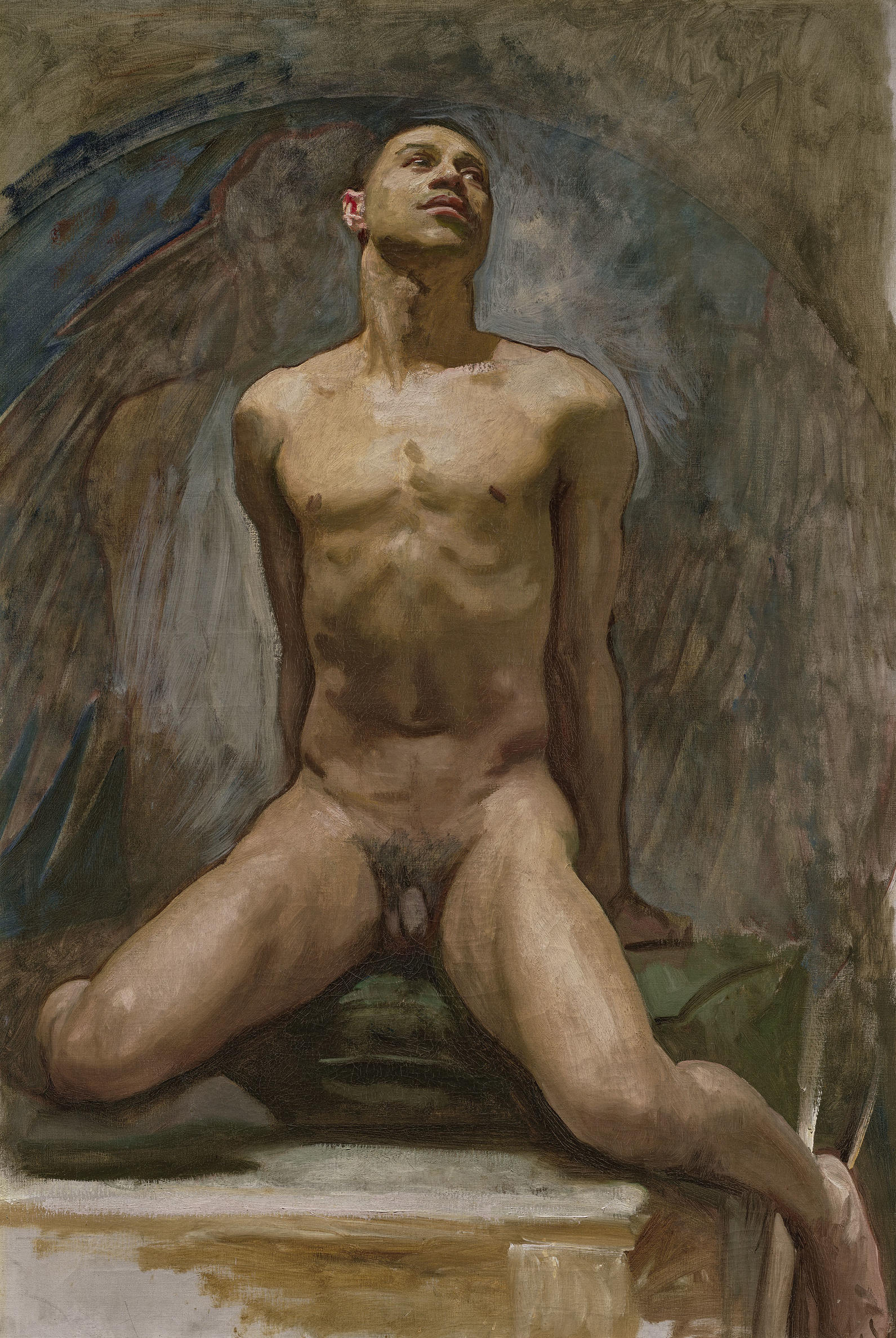Thomas McKeller by John Singer Sargent
Artist-in-Residence Steve Locke guest writes this post about Thomas McKeller, the central figure in the special exhibition, Boston’s Apollo.
Artist-in-Residence Steve Locke guest writes this post about Thomas McKeller, the central figure in the special exhibition, Boston’s Apollo.
In 1916, John Singer Sargent (1856–1925) met Thomas Eugene McKeller (1890–1962), a young, Black elevator attendant, at Boston’s Hotel Vendome. McKeller posed for most of the figures—both male and female—in Sargent’s murals in the Museum of Fine Arts. The painter transformed McKeller into white gods and goddesses, creating soaring allegories of the liberal arts that celebrated the recent expansion of the city’s premier civic museum. Sargent then gave several preparatory drawings of McKeller to Isabella Stewart Gardner, ensuring their preservation in perpetuity. He also painted a nude study of Thomas McKeller now in the collection of the Museum of Fine Arts, Boston and below is artist Steve Locke’s interpretation of the painting.

John Singer Sargent (American, 1856–1925), Thomas McKeller, 1917–1921.Oil on canvas, 125.7 x 84.5 cm (49 1/2 x 33 1/4 in.) Museum of Fine Arts, Boston (1986.60) Photograph © 2019 Museum of Fine Arts, Boston
Sargent worked on this painting for three years while developing the MFA murals, but it was never exhibited during his lifetime. It was not a commission (and he had painted plenty of those). It was a painting he made for himself. Thomas McKeller resonates an erotic languor. Translucent steel blue wings emerge behind him. It calls to mind the idea of the fallen angel. Or even Prometheus, bound to a rock. Or an adult Cupid, the winged god of erotic love.
As charged and erotic as I find this image, I recognize in it the work between and artist and their model, struggling together. This painting exists because McKeller’s presence, not just his body, gave Sargent the courage to make it. Working with McKeller, through portraiture, Sargent was able to access a sensual and mythical presence so charged with frank humanity that it remains shocking to this day.
We do not know a lot about the relationship between McKeller and Sargent, but we do have the painting. And to my eye it is the kind of image that could only have been made in shared confidence and trust. I think of it as a kind of a miracle that these two men found each other and built the murals and this painting together—public and private.

Learn more about Boston's Apollo: Thomas McKeller & John Singer Sargent

Boston's Apollo: Thomas McKeller & John Singer Sargent

Thomas Eugene McKeller, John Singer Sargent, and Isabella Stewart Gardner